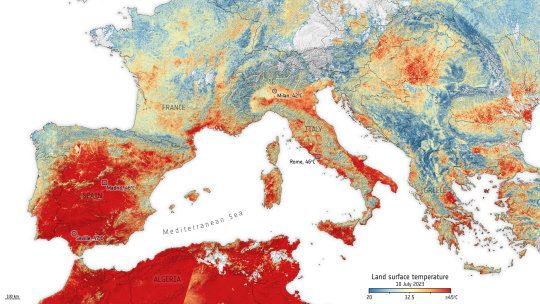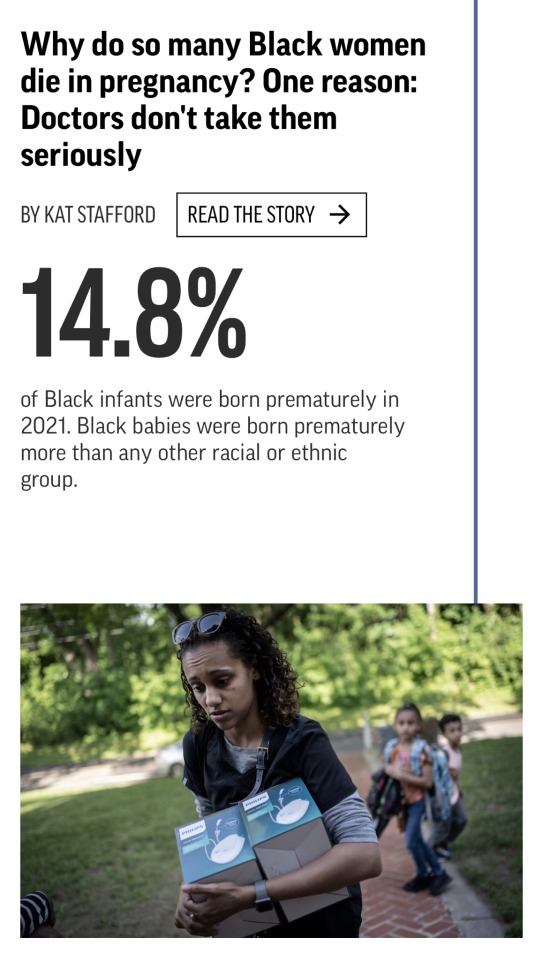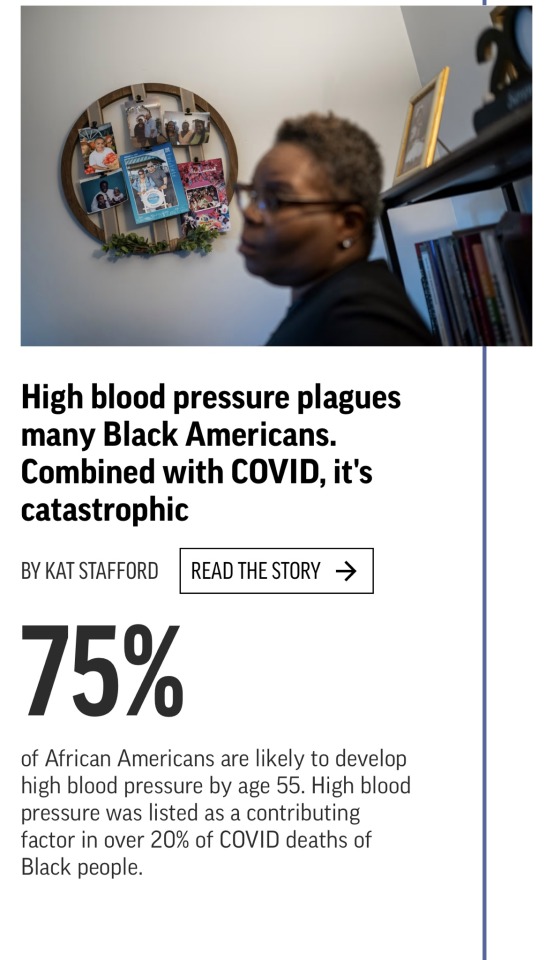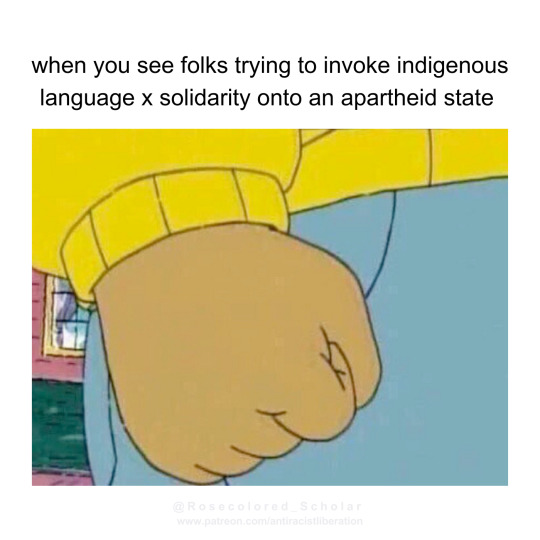#environmental racism
Text
The latest snow survey and water supply bulletin from the BC River Forecast Centre has provincial officials worried about the coming spring and summer months.
The report said B.C.’s snowpack is at 63 per cent of normal right now, which is the lowest in 50 years.
Last year at this time, B.C.’s provincial snowpack average was at 88 per cent.
“We know this is concerning news. Communities around B.C. experienced serious drought conditions last summer,” B.C. Minister of Water, Land and Resource Stewardship Nathan Cullen said.
“It fuelled the worst wildfire season ever, harmed fish and wildlife, and affected farmers, ranchers, First Nations and industry.” [...]
Continue Reading.
Tagging: @newsfromstolenland
#cdnpoli#British Columbia#environment#flora & fauna#conservation#Indigenous politics#environmental racism
62 notes
·
View notes
Text
"The Environmental Protection Agency (EPA) finalized a rule Tuesday [April 9, 2024] that will require 218 chemical plants to reduce toxic and carcinogenic airborne pollutants, aiming to reduce the number of people with elevated cancer risk by 96% nationwide.
The rulings principally address chloroprene: used to make rubber products, and ethylene oxide, used primarily for sterilizing medical supplies. Long-term exposure to these chemicals and their manufacturing have been identified as possible carcinogens, or cancer-causing agents.
According to a report in the Washington Post, this can include lymphoma, leukemia, breast cancer, and liver cancer.
Across a strip of Louisiana and Texas where half of the 218 chemical manufacturing facilities set to be affected by the new regulations are located, cancer rates of these kinds are substantially higher than national averages, leading it to be colloquially called “Cancer Alley.”
EPA Administrator Michael Regan visited Cancer Alley during the open-comment period of the proposed ruling, and said that across the 85 miles dotted with communities, he failed to meet a single person who didn’t know a loved one or friend who had either developed cancer, died of it, or knew someone who had.
Once implemented, the ruling will reduce more than 6,200 tons of toxic air pollution each year, according to the Post."
-via Good News Network, April 15, 2024
#I was going to say “wait isn't it normal for everyone to know someone who got cancer”#then I remembered that I grew up three miles from the site of a gigantic nuclear meltdown#which hardly anyone knows about it because they fucking covered it up btw#so it's possible I'm wrong and that is not a normal thing#united states#epa#environmental protection agency#louisiana#texas#cancer#cw cancer#public health#pollution#air pollution#environmental racism#environmental justice#oncology#good news#hope#cancer alley
305 notes
·
View notes
Text
Children living in racially segregated neighborhoods have higher levels of lead in their blood, a new study shows.
The findings, published in the journal Pediatrics, underscore the negative health effects of policies stemming from systemic racism.
The study is the latest from the University of Notre Dame’s Children’s Environmental Health Initiative (CEHI), which examines the adverse and disproportionate environmental burdens experienced by communities in racially segregated areas.
Continue Reading.
141 notes
·
View notes
Text
So I was scrolling and saw this image in an article about the European heat wave,

And was like, uh, are you missing something there, buddy? Like all that red in northern Africa? Because that's a lot of red.
And I was going to give them the benefit of doubt, since I don't know much about the climate in Northern Africa, aside from Morroco and Egypt, which seem like really hot places, so you know, maybe it's normal there?
But nope, that's not the case:
"While the planet broke multiple records for average worldwide temperatures last week, a heat wave gripped northern Africa.
The region has been experiencing some of the most intense heat waves in recent years, but in many cases they’ve been under-reported due to misconceptions about Africans’ ability to withstand them.
“Africa is seen as a sunny and hot continent,” said Amadou Thierno Gaye, a research scientist and professor at Cheikh Anta Diop University in Dakar, the capital of Senegal. “People think we are used to heat, but we are having high temperatures for a longer duration. Nobody is used to this.”
North Africa, the Sahara desert and the Sahel, a semi-arid belt north of the Sudanian savanna, are some of the most vulnerable areas because they have larger land masses relative to the rest of the continent, meaning they tend to heat up faster. Scientists have attributed the unprecedented temperatures to a combination of human-induced climate change and the return of El Niño, a natural phenomenon that alters weather patterns.
The Sahel, for instance, has been heating at a faster pace than the global average despite being hot already. Burkina Faso and Mali, both in West Africa’s Sahel, are among countries that are set to become almost uninhabitable by 2080, if the world continues on its current trajectory, a UK university study found. Its people are especially vulnerable due to shrinking resources, such as water, and poor amenities, and a dearth of trees and parks means there are few options for places to cool off.
“People talk of climate change as if it’s a thing of the future,” said Gaye. “Climate change is already here and we see its implications in people, livelihoods, economies and even in cultures.”
While studies on heat impacts on health are limited in Africa, research published last year found that children younger than 5 years old are particularly vulnerable to the hotter weather as they are less able that adults to self-regulate their bodies’ temperatures. The authors estimated that heat-related child mortality was rising in sub-Saharan Africa due to climate change. Other researchers have named the elderly, pregnant women and people who work outdoors, as groups at risk of heat strokes or heat-related infectious diseases.
Elsewhere on the continent, the crisis is also being felt. In the Horn of Africa, at least 43,000 people died in Somalia alone last year as a result of the worst drought in four decades. A study found that global warming is changing rain patterns and bringing more heat to Somalia and some of its neighbors, for longer stretches of time. Further south, unusually destructive cyclones in 2019 claimed more than a thousand lives in Mozambique and Zimbabwe alone.
“If we continue business-as-usual, the heat is not just going to get worse, it will get much worse,” said Mouhamadou Bamba Sylla, research chair in climate change science at the African Institute for Mathematical Sciences in Kigali, the capital of Rwanda. “We are going to see more frequent, longer and more intense heat waves.”
Much of the continent, responsible for just 4% of the world’s greenhouse gas emissions generated from burning fossil fuels, is ill-prepared for a hotter world. Meanwhile, Group of 20 nations, with air conditioning and access to functioning healthcare facilities, account for 80% of the world’s emissions.
Hundreds of millions of Africans lack electricity to even power a fan. One in three people in Africa is affected by water scarcity, according to the World Health Organization, so hydration can’t be taken for granted. Even shade is harder to come by due to widespread deforestation and land degradation. And only 40% of people on the continent are covered by early warning systems for extreme weather.
“More funds have to be allocated to climate adaptation and they need to be made more easily accessible to the most vulnerable countries,” Sylla said.
The UN climate talks later this year aspire to come up with a plan for richer nations to pay for loss and damages. But they’ve collectively fallen short of their commitment to spend $100 billion each year on projects in developing nations to cut emissions and to help them adapt.
“That’s where the issue of climate justice comes in,” said Gaye. “It’s not just that people are uncomfortable, climate change is killing them.”
#climate change#is happening now#we're seeing the effects now#reminder that western countries stole people and resources from Africa#environmental racism
252 notes
·
View notes
Text
From the article:
Christine Louis-Jeune knew she was home when she saw ash falling from the sky and onto her windshield.
She hadn’t been back to her central Florida hometown of Belle Glade in six months. She was both exhausted after a six-plus hour drive from Tallahassee and excited to tell her parents about her first semester at Florida A&M University.
But as she saw the dark clouds of smoke, all she could think about was how to get out of the car without getting ash on her clothes or in her lungs. She looked for extra masks in her glove compartment. She began to worry about her family, and hoped they were safely at home with all the windows shut.
Her homecoming had been darkened by what Belle Glade residents call “black snow” —ash and soot that fall on the low-income communities south of Lake Okeechobee (also known as the Glades) during the six-month sugarcane burning season.
Every year from October to March, farmers in South Florida set fire to over 400,000 acres of sugarcane fields in preparation for their harvest. Residents of the surrounding, predominantly Black towns have long complained of the accompanying smoke, and research has indicated adverse impacts on health. Community organizers and environmental experts propose green harvesting as an alternative to this widespread and controversial practice.
40 notes
·
View notes
Text
Because the territory of Palestine is a contested space the conflict over land and water is shown to be one of the main drivers behind land use and labour practices and the development and implementation of agricultural technology in Israel/Palestine. [...]
One aspect of agricultural development in Israel is that there exists the imperative for extensification along with intensification, due to security needs. This refers to increasing the area under cultivation and pursuing agriculture in peripheral areas (the desert, the north) regardless of the economic cost as a means of claiming, occupying and in the process defending territory under dispute. In Israel, this is called «creating facts on the ground.» Thus, rather than accepting water scarcity as an ecological constraint, Israeli agriculture has turned to technological fixes which permit agricultural activity at any cost. This need to overcome water supply limitations in the face of the «agricultural imperative» has contributed to a range of technological innovations regarding water use – including drip irrigation, the reclamation and reuse of wastewater, cloud seeding and large-scale desalination. This has enabled the country to continue and expand agricultural production despite growing water scarcity.
On the Palestinian side we see how agriculture has responded to politically created water and land scarcity. After the occupation (1967), agriculture in the West Bank is reshaped in large part through Israel´s direct and indirect control of labour, land and access to water so as to complement and discourage competition with the Israeli market. The various mechanisms of control exerted can be defined as environmental racism or environmental injustice, the inequitable distribution of environmental burdens and access to environmental goods (Martínez-Alier, 2002), whereby valuable ecological resources are transferred to Israel and environmental bads such as pollution from the settlements are externalized onto the occupied territories (OPT). Agriculture in the West Bank is conditioned through a series of coping strategies as a response to these pressures.
– 2009. Leah Temper, "Creating Facts on the Ground: Agriculture in Israel and Palestine (1882-2000)," Historia Agraria 48, pp. 75-110.
51 notes
·
View notes
Text
So proud of the kids in south Baltimore fighting against the huge coal corporations which have been killing people via coal dust for decades
Give em hell guys
#youth activism#youth of america#climate activism#environmental discrimination#environmental racism#youth of color
62 notes
·
View notes
Text








FROM BIRTH TO DEATH, Black Americans fare worse in measures of health compared to their white counterparts. They have higher rates of infant and maternal mortality, higher incidence of asthma during childhood, more difficulty treating mental health as teens, and greater rates of high blood pressure, Alzheimer's disease and other illnesses.
The Associated Press spent the past year exploring how the legacy of racism in America has laid the foundation for the health inequities that Black people face.
Links to each article beneath the “Keep reading” cut
Why do so many Black women die in pregnancy? One reason: Doctors don't take them seriously (link)
Black children are more likely to have asthma. A lot comes down to where they live (link)
Black kids face racism before they even start school. It's driving a major mental health crisis (link)
High blood pressure plagues many Black Americans. Combined with COVID, it's catastrophic (link)
A lifetime of racism makes Alzheimer’s more common in Black Americans (link)
Medical Racism in History (link)
#medical racism#racialized misogyny#structural racism#black history#racism#politics#inequality#healthcare#medical#two americas#double standards#from birth to death#systemic racism#environmental racism
99 notes
·
View notes
Text


From Haiti and Hawai’i to Ferguson, Atlanta, and Palestine, many of us exist in spaces + places of apartheid, state-sanctioned violence, and erasure at the hands of imperialist, settler-colonial states and sovereign powers who reinforce their dominance and legitimacy through instruments of manipulation and death.
But antiracism is built and sustained on the freedom struggles against apartheid.
So if ya wanna be antiracist, you first have to understand what apartheid is, what it looks like, how it works, and it infects and affects all of us.
We cannot manidest wings of peace while we are still unfree. For we must do this work until we are ALL free. 🇵🇸 🌿 🇭🇹 🌿 🇿🇦 🌿 🇺🇸
#our world#black lives matter#free palestine#Free Haiti#politics#padawan historian#solidarity with palestine against apartheid#flowers and freedom for palestine#stop cop city#ecosystem of white supremacy#environmental racism#Palestine#Zionism is not Judaism#israel is an apartheid state
52 notes
·
View notes
Text
If built, Donlin would be the largest open pit pure gold mine in the world within one of the world’s largest river deltas. The ecosystem it threatens is vitally important for fish, wildlife, food security, and the physical, cultural, spiritual, and mental wellbeing of the Alaska Native people who have lived here for thousands of years.
Industry and its boosters dream of the last frontier crisscrossed with massive mines, oil fields, pipelines, roads, and other infrastructure, but it’s not empty land. Tribes who have lived in this region from time immemorial say projects like Donlin conflict with traditional ways of life and the Tribes’ present existence. Other Alaskans and Americans from across the country feel deeply about protecting these lands and waters too, as demonstrated when they raised their voices against Pebble Mine in Bristol Bay, drilling in the Arctic Refuge, and ConocoPhillips’s Willow Project — all of which Earthjustice challenged in court.
Donlin, jointly owned by two Canadian mining giants, Novagold and Barrick Gold, is supported by the region’s for-profit Alaska Native corporations, who own the surface and subsurface rights to the mine, but not by most Tribes in the region. More than a dozen Tribes have passed formal resolutions opposing the project, and six Tribes and an Alaska nonprofit, represented by Earthjustice, are challenging the project on legal grounds. All told, litigants have brought four separate lawsuits opposing the mine in state and federal court, with different plaintiffs on each case.
#Alaska#Indigenous Americans#Kuskokwim River#Tuluksak#environmental racism#environmental issues#indigenous rights#indigenous peoples#Donlin gold mine
42 notes
·
View notes
Text
By Tewa Women United
This week, “Oppenheimer” will open, a film that centers on the creation and use of the atomic bomb through the story of J. Robert Oppenheimer.
Go see the movie if it calls to you. But please also take time to learn about the other side of the story and what unfolded at Tsankawi (also known as Los Alamos) and the Pajarito Plateau 80 years ago — the story that centers the Indigenous and land-based peoples who were displaced from our homelands, the poisoning and contamination of sacred lands and waters that continues to this day, and the ongoing devastating impact of nuclear colonization on our lives and livelihoods.
We’ve put together this resource list with a focus on Indigenous and land-based communities, so you can learn more about our side of the story and ways to respond.
#Oppenheimer#Indigenous people#imperialism#nukes#environmental racism#Los Alamos#Tewa#films#propaganda#colonialism#displacement#landback#Struggle La Lucha
47 notes
·
View notes
Text
Content warning for police violence, anti-indigenous racism, ableist language, and sexual violence.
RCMP officers referred to First Nations pipeline opponents as "orcs" and "ogre" during a police raid at a blockade of Coastal GasLink pipeline construction in November 2021, according to audio recordings played in court Wednesday.
The recordings were played as evidence in B.C. Supreme Court in Smithers in an abuse of process application filed by Sleydo', also known as Molly Wickham, a Wing Chief of Cas Yikh, a house group of the Gidimt'en Clan of the Wet'suwet'en Nation; Shaylynn Sampson, a Gitxsan woman with Wet'suwet'en family ties and Corey Jocko, who is Kanien'kehá:ka (Mohawk) from Akwesasne, which straddles the Quebec, Ontario and New York state borders.
The accused were found guilty last week of criminal contempt of court for breaking a 2019 injunction that impedes anyone from blocking work on the Coastal GasLink pipeline.
The abuse of process application alleges RCMP used excessive force when they were arrested and that they were treated unfairly while in custody. The filing asks that if the judge doesn't stay their charges, then it would be appropriate to reduce their sentences based on their treatment by police.
Continue Reading
Tagging @politicsofcanada
#cdnpoli#canada#canadian politics#canadian news#wet'suwet'en#first nations#environmental racism#rcmp#police violence#police brutality#police racism#racism#police#acab#abolish the police#anti indigenous racism
378 notes
·
View notes
Text
"In cities across the country, people of color, many of them low income, live in neighborhoods criss-crossed by major thoroughfares and highways.
The housing there is often cheaper — it’s not considered particularly desirable to wake up amid traffic fumes and fall asleep to the rumble of vehicles over asphalt.
But the price of living there is steep: Exhaust from all those cars and trucks leads to higher rates of childhood asthma, cancer, cardiovascular disease, and pulmonary ailments. Many people die younger than they otherwise would have, and the medical costs and time lost to illness contributes to their poverty.
Imagine if none of those cars and trucks emitted any fumes at all, running instead on an electric charge. That would make a staggering difference in the trajectory, quality, and length of millions of lives, particularly those of young people growing up near freeways and other sources of air pollution, according to a study from the American Lung Association.
The study, released [February 28, 2024], found that a widespread transition to EVs could avoid nearly 3 million asthma attacks and hundreds of infant deaths, in addition to millions of lower and upper respiratory ailments...
Prior research by the American Lung Association found that 120 million people in the U.S. breathe unhealthy air daily, and 72 million live near a major trucking route — though, Barret added, there’s no safe threshold for air pollution. It affects everyone.
Bipartisan efforts to strengthen clean air standards have already made a difference across the country. In California, which, under the Clean Air Act, can set state rules stronger than national standards, 100 percent of new cars sold there must be zero emission by 2035.
[Note: The article doesn't explain this, but that is actually a much bigger deal than just California. Basically, due to historically extra terrible pollution, California is the only state that's allowed to allowed to set stronger emissions rules than the US government sets. However, one of the rules in the Clean Air Act is that any other state can choose to follow California's standards instead of the US government's. And California by itself is the world's fifth largest economy - ahead of all but four countries. So, between those two things, when California sets stricter standards for cars, they effects ripple outward massively, far beyond the state's borders.]
Truck manufacturers are, according to the state’s Air Resources Board, already exceeding anticipated zero-emissions truck sales, putting them two years ahead of schedule...
Other states have begun to take action, too, often reaching across partisan lines to do so. Maryland, Colorado, New Mexico, and Rhode Island adopted zero-emissions standards as of the end of 2023.
The Biden administration is taking similar steps, though it has slowed its progress after automakers and United Auto Workers pressured the administration to relax some of its more stringent EV transition requirements.
While Barret finds efforts to support the electrification of passenger vehicles exciting, he said the greatest culprits are diesel trucks. “These are 5 to 10 percent of the vehicles on the road, but they’re generating the majority of smog-forming emissions of ozone and nitrogen,” Barret said...
Lately, there’s been significant progress on truck decarbonization. The Biden administration has made promises to ensure that 30 percent of all big rigs sold are electric by 2030...
Such measures, combined with an increase in public EV charging stations, vehicle tax credits, and other incentives, could change American highways, not to mention health, for good."
-via GoodGoodGood, February 28, 2024
#cw cancer#cw infant death#asthma#respiratory infection#disability#air pollution#air quality#evs#electric vehicles#united states#us politics#biden administration#big rigs#trucks#public health#environmental racism#good news#hope#fossil fuels#carbon emissions
113 notes
·
View notes
Text
151 notes
·
View notes
Text
Hello hello! Please help a journalism graduate student out!
I’m currently writing an article for class regarding environmental racism, waste colonialism, and the impact of polluting facilities/waste being intentionally positioned closer to minority and low-income communities.
I would love to hear from anyone currently in or who has spent time in affected communities about their experience, any concerns that have been raised, if those concerns have been ignored or listened to, and anything else that you find important to speak about.
Please DM me if you can offer any comment on the issue, I would greatly appreciate your time!
Just a heads up as well that I would need your name, age, pronouns, profession, and contact info (at least an email) to list as a source. If you are not comfortable with giving your real name, you can give a pseudonym to be quoted with. Your personal information will NOT be published anywhere, that is purely for my source list which will only be seen by my professor.
Thank you in advance to anyone who can help! :)
#environmental racism#environmental issues#environmental justice#environmental health#environment#waste colonialism#environmetalists#pollution#racisim#systemic inequality#systemic oppression#systemic injustice
7 notes
·
View notes
Text
11 notes
·
View notes